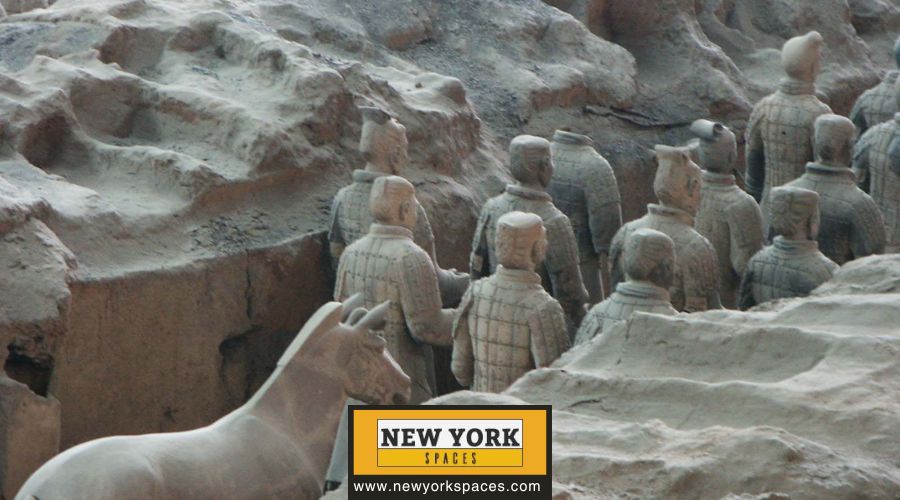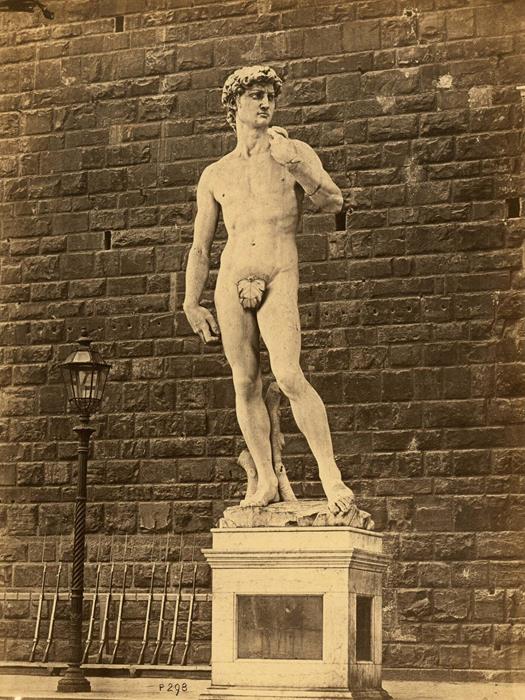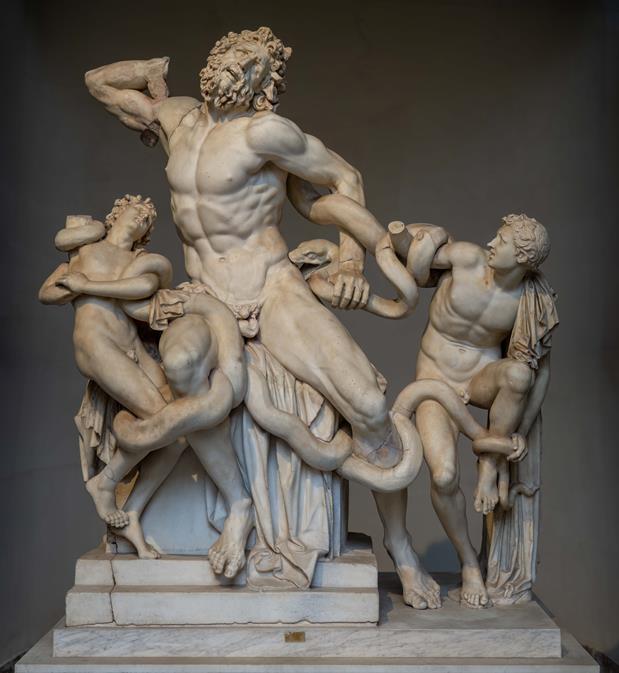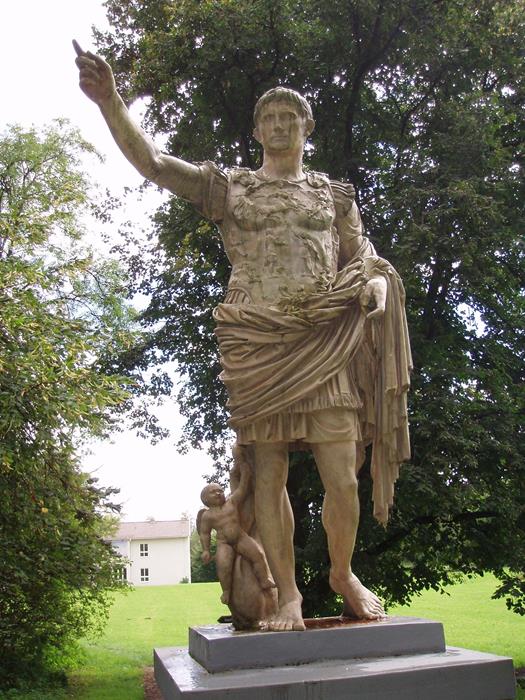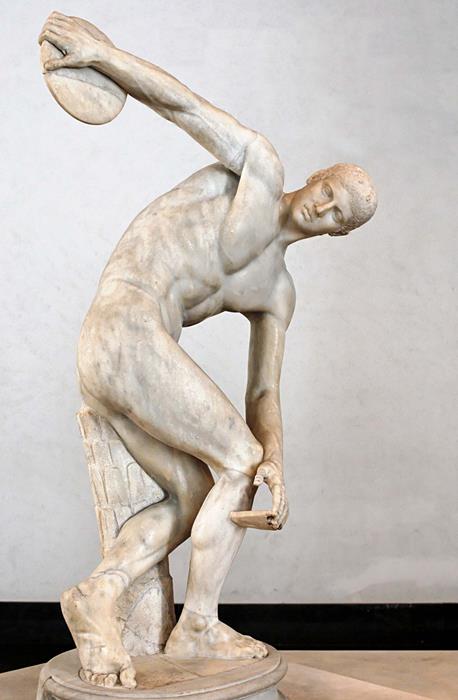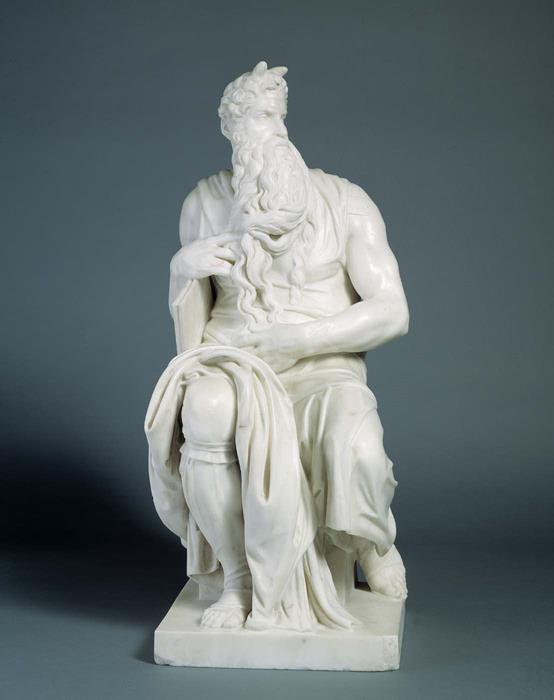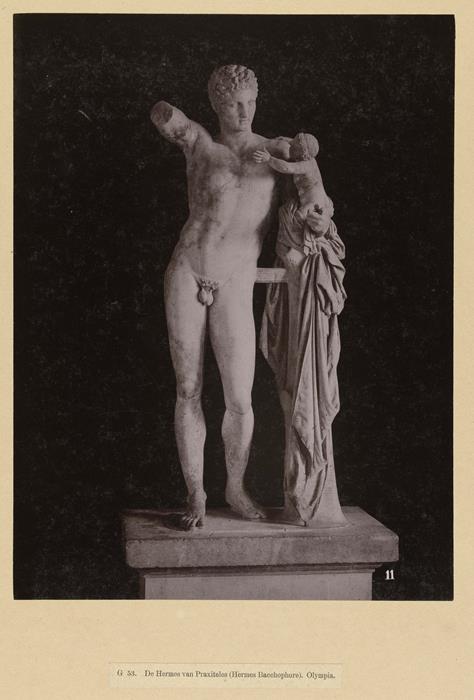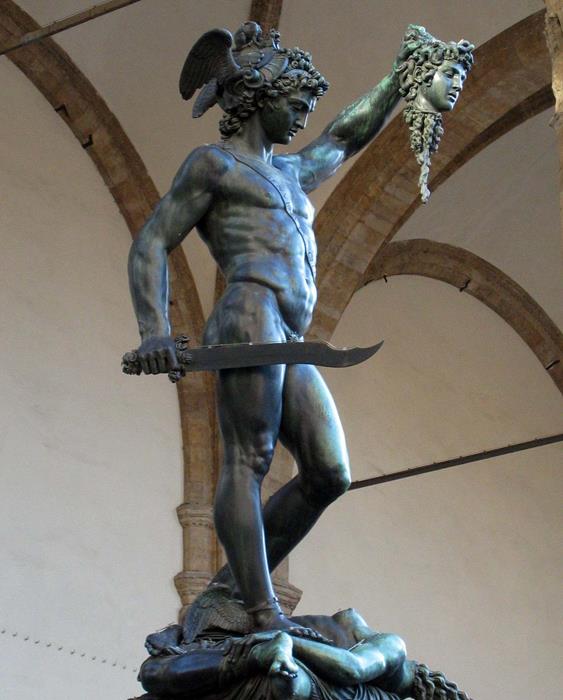Sculpture, one of the oldest and most revered forms of artistic expression, captures the complexity of human emotion, the intricacies of form, and the essence of beauty through three-dimensional art. Its history stretches back to ancient civilizations, where it played a crucial role in religious, cultural, and social contexts. This post aims to delve into the world of sculpture, focusing specifically on male figures immortalized in stone, bronze, and other materials over millennia.
The Role of Male Figures in Sculpture
The depiction of male figures in sculpture has been a cornerstone of artistic expression, transcending mere representation to delve into the essence of masculinity across different eras and cultures. These sculptures testify to the evolving perceptions of male identity, strength, and vulnerability, reflecting their times’ societal and cultural currents.
Historical Context and Cultural Representation
Male figures in sculpture have been a constant throughout the annals of art history, serving as a mirror to the society from which they emerged.
Ancient Civilizations: In ancient Egypt, sculptures of pharaohs and gods often depicted idealized masculinity, symbolizing power and divine connection. Greek art, famous for its obsession with ideal forms, celebrates the male body’s beauty and strength through figures like the kouroi.
Middle Ages to Renaissance: The transition from the stylized male figures of medieval art to the anatomically precise sculptures of the Renaissance marks a profound shift in the depiction of male figures, highlighting a renewed interest in humanism and the natural world.
Modern Era: Contemporary sculptures often take a more abstract approach, exploring the concept of masculinity in diverse and sometimes challenging ways, reflecting the complex dialogues around gender and identity in modern society.
Symbolism and Significance in Art History
Divine and Heroic Symbolism: In many cultures, male sculptures are emblematic of divine or heroic ideals, representing gods, heroes, or mythical figures endowed with virtues such as strength, courage, and wisdom.
Authority and Power: Statues of emperors, kings, and political leaders often convey authority and power, immortalizing these figures in poses and settings that emphasize their dominance and leadership.
Human Experience and Emotion: Beyond symbols of power and divinity, male sculptures frequently explore themes of human experience, emotion, and vulnerability, showcasing the artist’s ability to capture the complexity of the human condition through the medium of sculpture.
Iconic Male Sculptures from Ancient Times
The annals of art history are replete with representations of the male form, each telling a story of its era’s cultural ideals, religious beliefs, and societal structures. Ancient times, in particular, offered a rich tableau of male sculptures, ranging from the divinely inspired to the heroically human.
The Statue of Zeus at Olympia
Crafted by the famed sculptor Phidias, the Statue of Zeus at Olympia was a marvel of the ancient world and a symbol of divine majesty and power. This massive ivory and gold statue depicted Zeus seated on his throne, embodying the pinnacle of divine authority and the artistic ambition of the era.
Although the statue itself has been lost to time, its descriptions in ancient texts and influence on subsequent art make it a paramount example of male representation in sculpture. Its legacy, preserved through writings and replicated in various art forms, continues to awe and inspire, highlighting the ancient Greeks’ mastery of scale, proportion, and symbolism.
David by Michelangelo
A Renaissance masterpiece, Michelangelo’s David stands as a testament to the humanist ideals of the period, showcasing an unparalleled depiction of beauty, strength, and youthful defiance. Sculpted from a single block of marble, David captures the moment before the battle with Goliath, symbolizing the triumph of reason and beauty over brute strength.
This sculpture exemplifies artistic mastery and marks a significant departure from previous representations of male figures, emphasizing a more naturalistic and individual approach to the human form. David’s enduring appeal lies in its combination of idealized beauty with a deeply human sense of vulnerability and contemplation.
Laocoön and His Sons
This ancient sculpture, dating from the 1st century BC to the 1st century AD, was excavated in Rome in 1506 and is believed to represent the Trojan priest Laocoön and his sons being attacked by sea serpents. The work is a quintessential example of Hellenistic art, with its dramatic expression and vigorous movement.
Laocoön’s agony and the dynamic composition have made this sculpture a symbol of human struggle against the capriciousness of the gods, reflecting the Greek belief in the tragic nature of human life. It profoundly influenced Renaissance and Baroque artists, including Michelangelo.
Augustus of Prima Porta
This 1st-century AD statue is a marble copy of a bronze original that celebrates Augustus Caesar, the first emperor of Rome. Discovered in 1863 in the Villa of Livia at Prima Porta, it depicts Augustus as a great military victor and a godlike figure, reinforcing his divine right to rule.
The sculpture is notable for its detailed portrayal of Augustus’ armor and the Cupid at his feet, symbolizing his divine descent from Venus. It’s a prime example of Roman portraiture and propaganda, illustrating how sculpture communicated political messages.
Discobolus by Myron
The Discobolus, or “Discus Thrower,” created by the ancient Greek sculptor Myron in the 5th century BC, is known through numerous Roman copies. It represents an athlete in the moment of throwing the discus, capturing the beauty of athletic perfection and the idealized human form.
This sculpture is celebrated for its depiction of movement and the balance between muscular tension and the effortless grace of the athlete’s pose. It embodies the Greek appreciation for physical beauty, discipline, and the harmony of the body and mind.
Moses by Michelangelo
Carved by Michelangelo Buonarroti between 1513 and 1515, this statue was intended for the tomb of Pope Julius II. Michelangelo’s Moses is a masterpiece of the High Renaissance, showcasing the artist’s unparalleled ability to depict human figures with profound emotional depth and physical realism.
The sculpture portrays Moses with horns, a common interpretation in medieval art, symbolizing the rays of light that shone from his head after speaking with God. It’s a religious icon and a study in human psychology, capturing Moses in a moment of intense contemplation and barely contained energy.
Medieval to Renaissance Masterpieces
This era witnessed a remarkable shift from the stylized forms and religious iconography predominant in medieval art to the revival of classical ideals and the celebration of humanistic values during the Renaissance. The sculptures from this time demonstrate technical advancements in art and reflect the changing perspectives on human nature, divinity, and the world.
The Terracotta Army
The Terracotta Army, buried with the first Emperor of China, Qin Shi Huang, represents a monumental achievement in sculpture, comprising thousands of life-sized soldiers, each with unique features and attire. This vast collection of earthen sculptures showcases the incredible craftsmanship and the level of individuality achieved by artists of the Qin dynasty.
While the focus here is on male figures, the Terracotta Army is a powerful testament to the emperor’s authority and the beliefs surrounding the afterlife in ancient China. The project’s meticulous detail and sheer scale underscore the significance of the sculpture in immortalizing historical figures and their achievements.
Hermes and the Infant Dionysus by Praxiteles
This ancient Greek sculpture, attributed to the celebrated sculptor Praxiteles, marks a pivotal moment in the history of art for its depiction of the gods in a natural, relatable manner. Representing Hermes holding the infant Dionysus, the sculpture is renowned for its grace, balance, and subtle interaction between the figures, suggesting a moment of tenderness and connection.
Praxiteles’ work is significant for its departure from the more formal and idealized portrayals of deities, moving towards a more intimate and humanized representation. This piece exemplifies the shift towards realism and emotional expression, defining the Renaissance approach to sculpture.
Perseus with the Head of Medusa by Benvenuto Cellini
Completed in 1554, this bronze statue stands in the Loggia dei Lanzi in Florence. Cellini’s masterpiece depicts the moment Perseus triumphantly holds up the head of Medusa. The work is a tour de force of bronze casting and reflects the Mannerist style’s love for complexity and elegance.
The sculpture is notable for its dynamic composition, the finesse of its details, and its psychological intensity. Perseus’ expression of calm determination contrasts with the horror of Medusa’s severed head, exploring themes of bravery, violence, and beauty.
Modern Marvels
From the late 19th century to the early 20th century, this era saw artists breaking free from the strictures of classical forms and traditional subjects to explore more abstract, expressive, and sometimes provocative themes. The sculptures of this period not only reflect the tumultuous changes occurring in society but also the personal visions and inner turmoil of the artists themselves.
The Thinker by Auguste Rodin
“The Thinker” stands as one of the most iconic sculptures of the modern era, embodying deep contemplation and the intellectual struggle of man. Created by Auguste Rodin, this piece originally intended to depict Dante before the Gates of Hell, pondering his great poem. However, it has since transcended its initial context to become a universal symbol of thought and reflection.
Rodin’s work is celebrated for its ability to convey intense emotion and psychological depth through the physical form. It marks a significant departure from previous ideals of male beauty and heroism to a more nuanced exploration of the human psyche.
Transition to Abstract and Conceptual Depictions
The modern period is characterized by a dramatic shift towards abstraction and conceptual art, moving away from the literal representation of male figures to explore broader themes of identity, existence, and the nature of art itself. This shift is evidenced in the works of artists like Constantin Brâncuși and Henry Moore, who sought to capture the essence rather than the likeness of their subjects through their simplified forms and emphasis on materiality.
These sculptures challenge viewers to engage with the underlying ideas and emotions rather than the superficial appearance, reflecting the broader modernist quest for meaning in an increasingly fragmented world.
Contemporary Sculptures and Public Art
In the contemporary art scene, sculpture is a dynamic and powerful medium for exploring and expressing various themes, from personal identity to global concerns. Today’s artists leverage a variety of materials, technologies, and concepts to push the boundaries of what sculpture can be, often placing their works in public spaces to engage directly with a broad audience.
Innovative Designs and Social Messages
- Contemporary sculptures such as Anish Kapoor’s “Cloud Gate” in Chicago and Olafur Eliasson’s “The Weather Project” in the Tate Modern have captivated global audiences with unique designs and interactive elements. While not depicting male figures explicitly, these works demonstrate how sculpture can transform public spaces and engage communities in dialogues about art, environment, and collective experience.
- Artists like Ai Weiwei and Banksy have utilized sculpture to comment on political, social, and human rights issues, using the male figure symbolically to question authority, identity, and the human condition. Their works often incorporate elements of satire, tragedy, and hope, reflecting on the complexities of contemporary life.
Redefining Male Representation
- The representation of male figures in contemporary sculpture has evolved significantly, with artists exploring various themes, including masculinity, vulnerability, and identity. Antony Gormley’s “Another Place” features cast-iron figures staring out to sea, reflecting on the human relationship with nature and the self. This and similar works challenge traditional notions of masculinity, presenting a more nuanced and introspective exploration of male identity.
- Artists such as Kehinde Wiley, known for his vibrant portrayals of African American men in historical contexts, extend his exploration of male dignity and power into sculpture. His works redefine traditional representations of masculinity, highlighting strength, beauty, and vulnerability in equal measure.
Cultural Impact and Legacy
Sculptures, transcending mere artistic expression, have woven themselves into the fabric of society, shaping cultural landscapes and leaving enduring legacies. From ancient colossi to contemporary installations, these three-dimensional artworks have influenced the trajectory of art history and played pivotal roles in public spaces, museums, and educational institutions, enriching communities’ cultural and intellectual life worldwide.
Influence on Modern Art and Culture
- Sculptures have served as benchmarks for artistic innovation, inspiring generations of artists to push the boundaries of form, material, and concept. For instance, Michelangelo’s David and Rodin’s The Thinker have become icons of humanistic expression and introspection, influencing countless works in sculpture and other art forms.
- The integration of sculpture in contemporary culture extends beyond art for art’s sake, becoming a medium for social commentary and reflection. Public art installations challenge viewers to engage with critical issues, from Ai Weiwei’s commentary on human rights to Kapoor’s explorations of perception and space, demonstrating sculpture’s power to catalyze cultural dialogue and change.
Role in Public Spaces, Museums, and Educational Contexts
Public spaces: Sculptures have transformed urban and natural landscapes into interactive canvases where art becomes part of everyday life. The presence of sculptures in parks, squares, and city centers, such as the Charging Bull in New York or the Bean in Chicago, contributes to civic identity and community engagement.
Museums: Serving as custodians of cultural heritage, museums showcase the evolution of sculptural art, offering insights into the artistic techniques, cultural narratives, and historical contexts of different eras. Exhibitions of sculptures provide a tangible connection to the past and a source of inspiration for future artistic endeavors.
Educational contexts: Sculptures are invaluable educational tools, facilitating the study of art history, aesthetics, and cultural studies. Through hands-on experiences and interdisciplinary approaches, students can explore the multifaceted aspects of sculpture, from technical craftsmanship to symbolic interpretation.
The cultural impact and legacy of sculpture underscore its enduring relevance in society. As markers of history, beacons of innovation, and mediums for education and dialogue, sculptures enrich our cultural landscapes, inviting ongoing engagement with the art form and its implications for modern art and culture.
Conclusion
As we conclude our exploration of male sculptures across different periods and cultures, it’s evident that these works are indispensable in the global art scene. They are not just artifacts of their time but also powerful narratives that speak to the universal human condition. The journey through ancient, medieval, Renaissance, modern, and contemporary sculptures reveals a fascinating evolution in the representation of male figures, mirroring societal shifts, technological advancements, and changing perceptions of masculinity.
This evolution underscores the relevance of these sculptures to contemporary society, inviting us to reflect on our interpretations of masculinity, identity, and the human experience. Through their timeless beauty and complexity, these sculptures continue to engage, challenge, and inspire audiences around the world, proving that art, in its most profound form, transcends the boundaries of time and space.

